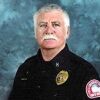Fires and twisted wreckage do not intentionally create harm, but a man with a gun lying in wait is an entirely new and different menace to the fire service.
In the early morning hours of April 24, members of the Los Angeles Fire Department responded to a reported fire south of downtown LA. While extinguishment was an expected knockdown inside a two-story home, gunshots ringing out during overhaul were not.
As firefighters retreated behind their apparatus, the gun-toting suspect barricaded himself in the burned-out structure after allegedly fatally shooting his 50-year-old mother. After two hours and a self-inflicted gunshot wound, the man surrendered to police.
Experienced firefighters acknowledge the dangers and hazards associated with the job. Fires, vehicle accidents and civilians in distress pose inherent risks. Unfortunately, there is a reluctant reality creeping into fire departments throughout the country, quickly becoming an over-riding threat to firefighters on scene. That threat is criminal intent.
The response environment includes dangers other than smoke and flame
Today’s response environment is not that of your parents or grandparents, but a new reality of intimidation and violence by personal attacks and organized resistance to any status quo. Whether by hidden terrorist, distraught neighbor or planned protest, fire departments must begin to protect themselves from more than smoke and flame.
While formal and large-scale active shooter training has progressed significantly with the aid of law enforcement and government agencies, community response by local fire departments continues to be socially predictable. Firefighters and their officers want to believe in the best of people’s intentions during the worst of circumstances, and traditional fire department response policies reflect this outdated narrative.
In today’s world, nothing can be assumed an accident, coincidence or routine call. A van veering off the road onto a walkway, killing 10 people in Toronto, is eventually revealed as a violent criminal act, capable of additional consequences to firefighters and medics arriving on scene. The attempted car bombing in Times Square in 2010 was dispatched as a car fire. As difficult and disheartening as it is, firefighters and their departments must accept this contemporary view of the world and its inhabitants if they are to remain safe and sound for the next alarm.
Changing policies and procedures to protect firefighters
The consequence of this new reality is that fire department response policies and procedures must change. Beginning with organizational awareness, increased planning and focused leadership; training and actual response perimeters can be enhanced to protect firefighters. Training scenarios identifying possible threats, weapons and criminal profiles, as well as an effective outline of unconventional risk management criteria, provide a level of awareness and capability necessary on every alarm by every firefighter.
Law enforcement needs to be notified of every fire department and medical call in their district, and kept up to date on scene status and any request for response. Pre-planning with police agencies gives fire departments effective input into predetermining enforcement response benchmarks and defining suspicious conditions.
Fire departments can provide protection gear, such as ballistic vests and Kevlar helmet inserts. Scene security, apparatus placement and personnel movement should be challenged on every call, regardless of the situation. No one in and around the scene can be considered neutral to the incident. An aggressive but suspicious response is understood and required under a new fire service paradigm.
With documented attacks on first responders increasing throughout the world, fire departments and their members must believe that intentional harm is a constant threat regardless of their size and location. All fire departments must acknowledge and prepare for the inevitability that no town is too small, or region too remote as to experience the devastation perpetrated by those willing to hurt or kill others by any means and for whatever reason, including firefighters coming to help.













